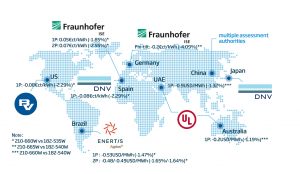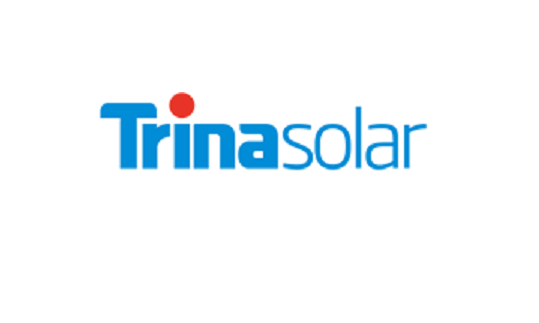 Trina Solar released a new CAPEX and LCOE Assessment White Paper, bringing together calculations and studies from Fraunhofer ISE, DNV, Black & Veatch, Enertis Applus+ and UL, five leading global authorities on PV system analysis. The analysis covers six countries and forms 84 sets of comparative data, showing the comprehensive system value advantage of the Vertex series modules. It is the latest in a series of white papers on the 210mm module ecosystem, following the Inverter Compatibility White Paper and the Solar Tracker Compatibility White Paper published last year.
Trina Solar released a new CAPEX and LCOE Assessment White Paper, bringing together calculations and studies from Fraunhofer ISE, DNV, Black & Veatch, Enertis Applus+ and UL, five leading global authorities on PV system analysis. The analysis covers six countries and forms 84 sets of comparative data, showing the comprehensive system value advantage of the Vertex series modules. It is the latest in a series of white papers on the 210mm module ecosystem, following the Inverter Compatibility White Paper and the Solar Tracker Compatibility White Paper published last year.
Lower LCOE is critical to accelerating the clean energy transition
As part of the US transition to renewable energy, lower LCOE can accelerate the replacement of fossil energy such as coal and crude oil and promote the realization of carbon goals.
The white paper outlines various ways of reducing levelized cost of energy (LCOE). It lists the calculations and studies by Fraunhofer ISE, DNV, Black&Veatch, Enertis Applus+, and UL conducted in Germany, Spain, Brazil, the United States, Australia and the UAE. These studies cover PV modules of four different sizes: 210mm, 182mm, 166mm and 158mm. The studies show how different modules impact system value indicated by balance of system (BOS) cost and LCOE.
Cutting-edge Vertex 210mm modules reduce LCOE by up to 4.1%
The white paper points out that from the calculation formula of LCOE, system value is directly proportional to lifecycle costs such as CAPEX, OPEX, etc., and is inversely proportional to the power generation in the entire lifecycle. Under the same conditions, the power generation of the entire project life cycle will be different for different component (P-type) solutions, but the difference is limited, and the impact of the project’s CAPEX on LCOE is more significant. When the difference in power generation is limited, lower CAPEX means lower LCOE.
Download White Paper
